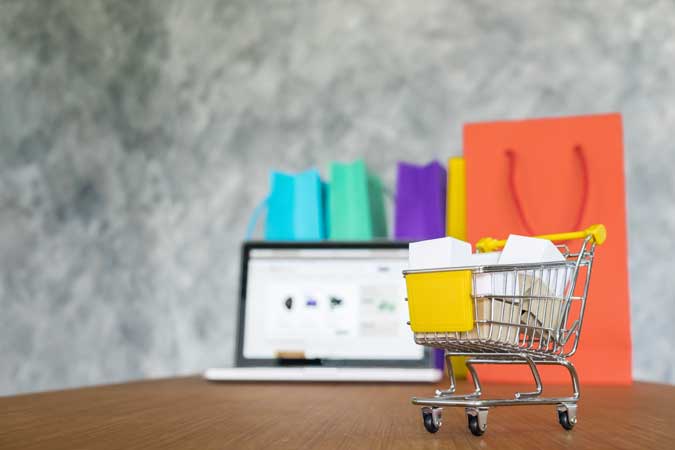Psychologist Maxwell Maltz theorized that it takes 21 days for a particular course of action to turn into a habit. If this habit is practiced for 66 days, it becomes an automatic response. And if such a response is practiced for 180 days, it becomes part of one’s character.
After 260 days in quarantine, it is safe to say that the changes in our preferences and the way we consume goods and services are now deeply etched in our character.
The Nielsen Company is a New York-based consulting behemoth with offices around the world. Its Philippine unit recently released a report that described the shifts in behavior among Filipinos consumers following the pandemic. It is chock full of insights and should serve as an invaluable tool for businesses involved in retail, wholesale, or trading operations.
The obvious reality is that e-commerce has moved to the mainstream and its share of the market continues to increase at an exponential rate. The rise of e-commerce comes at the expense of traditional supermarkets whose volumes are on a decline. Rising in patronage too are convenience stores and neighborhood markets, including sari-sari stores and community re-sellers.
As of the third quarter, as much as 17% of the population has shopped online of which 50% will continue to do so. Not only are Filipinos shopping for clothes, footwear, and electronics in online stores, they are buying their groceries there too. Facebook marketplace leads as the top merchant with 49% market share, followed by GrabMart at 25%, and Lazmart at a far 4%.
The reason for the popularity of e-stores is the phenomenal growth of e-payment platforms such as PayMaya and G-Cash as well as mobile banking. Also, a plethora of mom and pop stores have joined the fray with their homemade specialties, all of which add color and new dimensions to the shopping experience. Home based e-merchants are here to stay.
As far as shopping preferences are concerned, the non-essential category (that includes shoes, apparel, jewelry, bags and accessories) has declined by 34%. Meanwhile, food and non-alcoholic beverages have increased by 51%. Home care products, laundry products, and personal care products have increased by 48%.
The top selling food products in online groceries are (from highest to lowest): carbonated soft drinks, biscuits, spirits, mixed coffee, snacks, dietetics, powdered milk, instant noodles, bottled water, and read-to-drink milk.
Top selling non-food items include cigarettes, laundry soap, bathroom cleaning products, shampoo, disposable diapers, fabric conditioner, hair conditioner, toothpaste, facial care products, and sanitary napkins.
Preference towards products with multiple uses is on the rise. Rubbing alcohol, for instance, can be used as a disinfectant, deodorizer, and all-around cleanser. Also, trusted brands are preferred for edible products like canned and bottled food. However, cheaper brands are preferred for such items as laundry and bathroom products. There is also a trend towards bulk buying, not only for the discounts but also because buying trips are now less frequent.
Food delivery from restaurants have registered a spike of 58% and this upward trend is seen to continue. Food delivery serves the purpose of adding “spice” to daily family meals, not as its permanent replacement. Three out of four Filipino families cook at least two meals at home per day. Half of the population said they began to cook more often today than they did before the pandemic.
Studies further show that Filipino families do not resent staying home but instead have a newfound appreciation for it. Among the reasons cited is the savings derived from not going out or going out less often. Families have also come to appreciate intimate bonding and not having to deal with traffic. Approximately 300,000 babies will be born next year on the back of the lockdown, which represents a 17.5% increase from normal birthrates.
More people staying home have increased the sales of electronic gadgets by 38%. Digital media subscriptions like Netflix and the like have also increased by 34%. The majority of respondents claim that watching digital media is their way of destressing after working or studying.
In terms of share of wallet, food comes first for all income brackets. However, for the A, B, and upper C markets, they opt for healthier food stuff, even if more expensive. Savings derived from their inability to travel are channeled to more expensive food like high quality meats, premium seafood, and imported snacks. For the D and E markets, their priority is to eat three square meals a day and if there are extra funds, it is used to serve the needs and caprices of the children. After food comes the comfort for the family. This means allocating funds for electricity, water and internet. The third priority are cleaning and hygiene essentials. The fourth priority are occasional treats. For the A, B, and C markets, they spend on self pampering products and premium brands. For the D and E markets, they will spend on more food and products to relieve the boredom of their kids.
It is predicted that 2021 will bring another spike in unemployment and economic uncertainty. Consumers will become more risk averse and will seek products and services that deliver quality, value, and peace of mind. In other words, spending will be more mindful and luxury products will take a back seat. Households will continue to prioritize in-home spending rather than out of home discretionary spending.
The Filipino consumer now has a completely different character than he did before the pandemic. Businesses who adapt their products and value proposition to serve him better will emerge the winners in 2021.
Andrew J. Masigan is an economist
Twitter @aj_masigan

